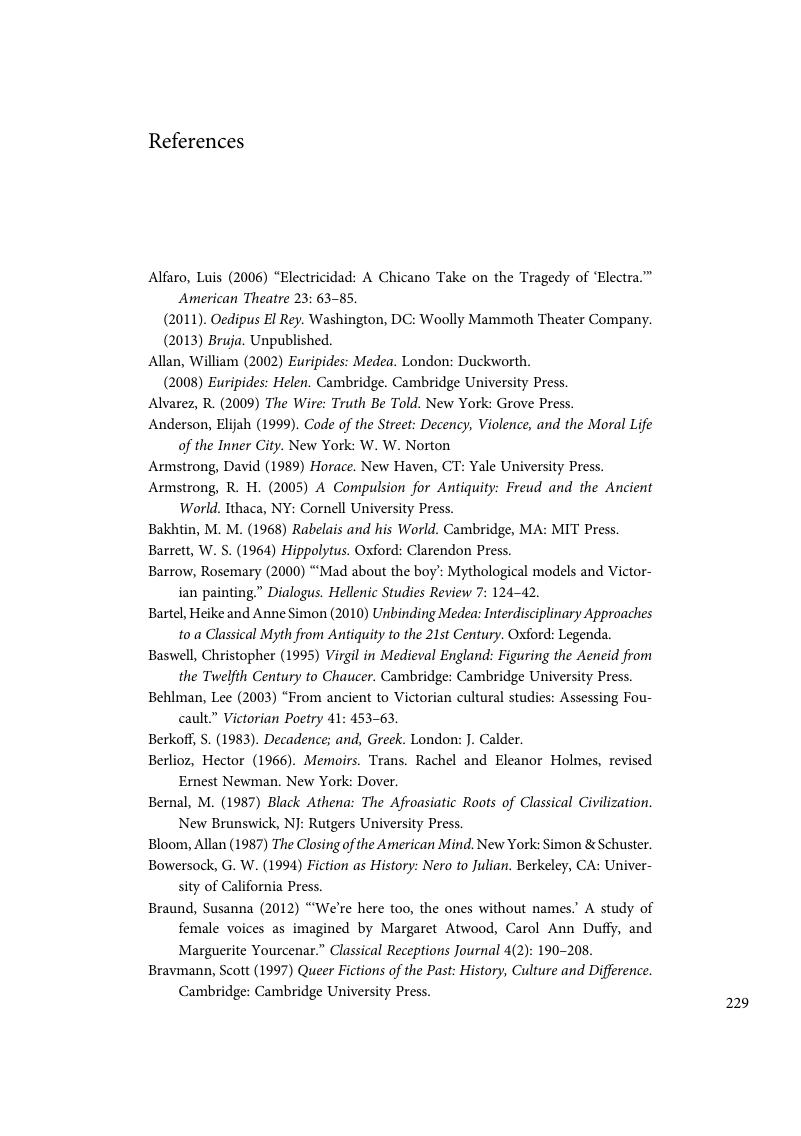Book contents
- Antiquity Now
- Antiquity Now
- Copyright page
- Contents
- Illustrations
- Acknowledgements
- 1 Introduction
- 2 It's Greek to them: Gay and lesbian receptions of the ancient world
- 3 Classics and ideology
- 4 September 11th on the Western stage
- 5 From the borders: Contemporary identity, community, and the ancient world
- 6 Power, the canon, and the unexpected voice
- 7 In conclusion: On fractures and fracturing
- References
- Index
- References
References
Published online by Cambridge University Press: 05 June 2015
- Antiquity Now
- Antiquity Now
- Copyright page
- Contents
- Illustrations
- Acknowledgements
- 1 Introduction
- 2 It's Greek to them: Gay and lesbian receptions of the ancient world
- 3 Classics and ideology
- 4 September 11th on the Western stage
- 5 From the borders: Contemporary identity, community, and the ancient world
- 6 Power, the canon, and the unexpected voice
- 7 In conclusion: On fractures and fracturing
- References
- Index
- References
Summary

- Type
- Chapter
- Information
- Antiquity NowThe Classical World in the Contemporary American Imagination, pp. 229 - 240Publisher: Cambridge University PressPrint publication year: 2015



